New exhibition : VODOUN TREASURE
A Journey at the heart of African sacred arts
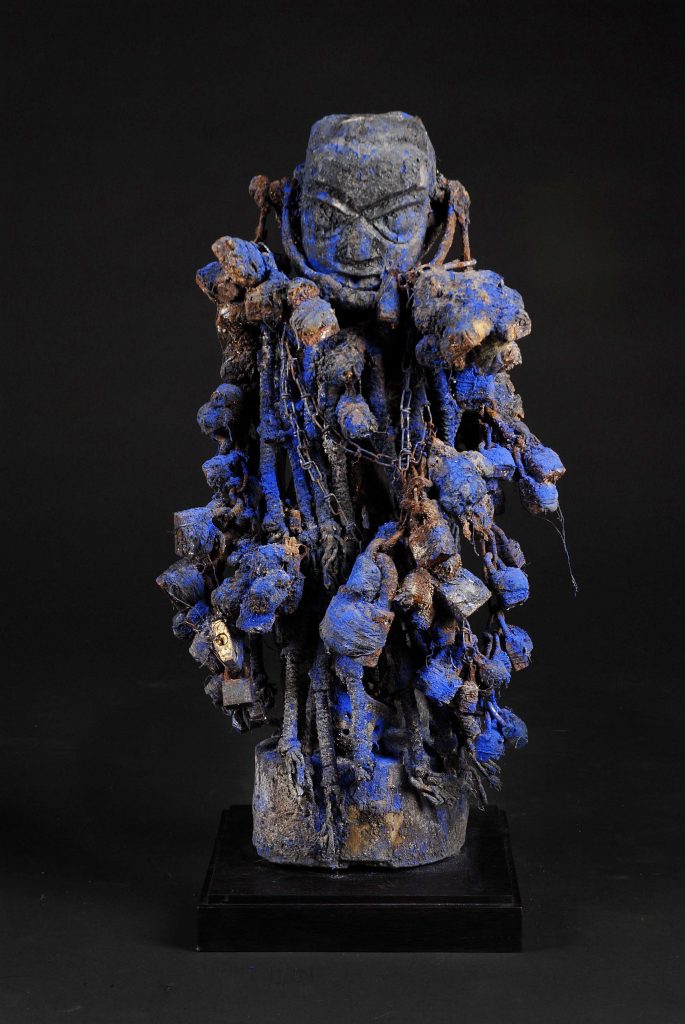
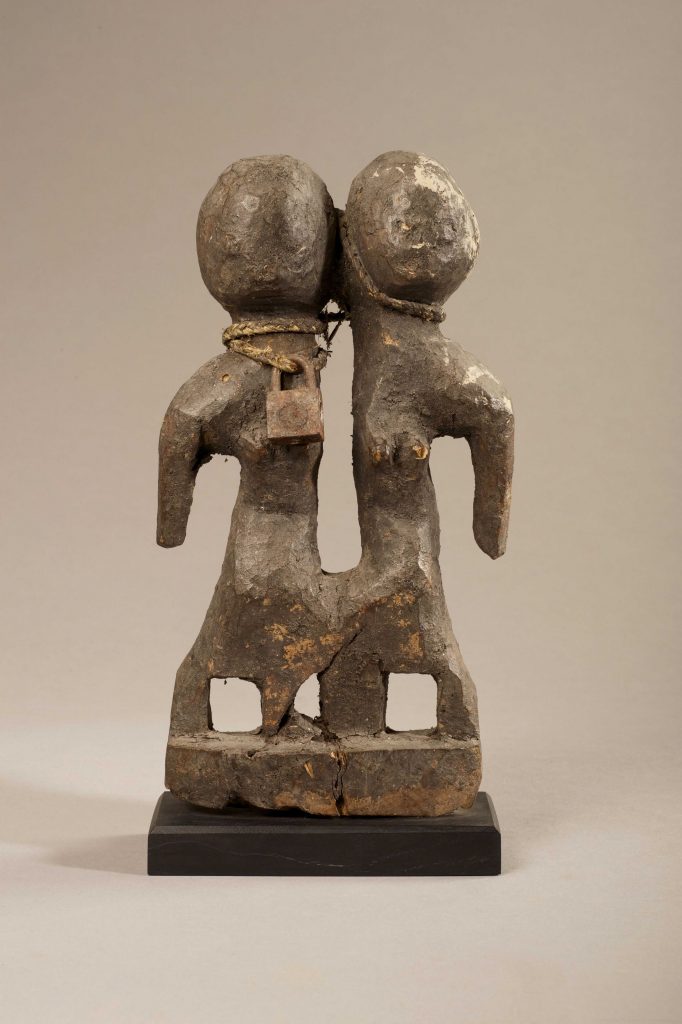

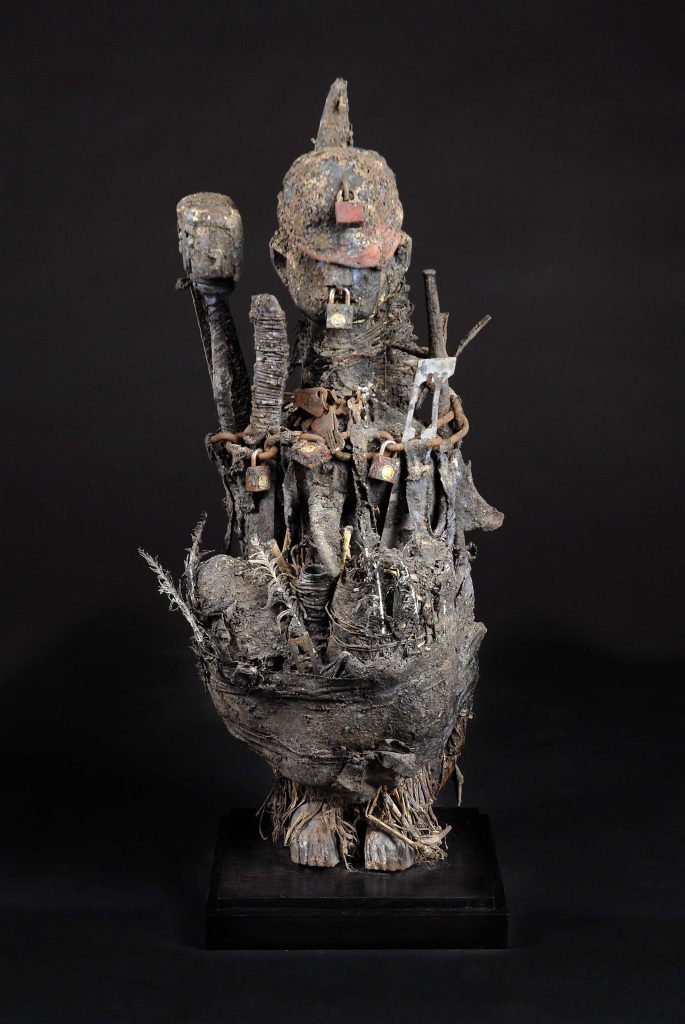

INTRODUCTION
‘Where the eyes cannot go, where the ears cannot hear, only the heart can go.’ – Proverb from Benin.
Marc and Marie-Luce Arbogast founded an exceptional work with their heart indeed: the Château Vodou in Strasbourg.
For many years, and with a great deal of energy, they have brought together, protected, and then promoted, within a museum in Alsace, the largest West African Vodou collection in the world.
We too have selected with our hearts the most fascinating pieces in the collection. It was an arduous (and subjective) challenge that the team set itself for the Château Vodou’s 10th anniversary exhibition. The sacred, art and science collide and juxtapose continuously in Vodoun/Vodou. How are you supposed to choose between 1,400 objects? Was it necessary to establish a representative sample of the most important artefacts in the cult? Should we choose according to aesthetic/artistic criteria? Should we be convinced by the emotions they evoke in us? Or maybe choose what most reminds us of the word ‘treasure’?
These questions were followed by heated, never-ended debates about the issues surrounding the collection: did we want an exhibition with an ‘anthropological’ focus? What limits should we set when faced with the taboos of the sacred? Is the temptation to rationalise everything inevitable in our profession? How can we define ‘African art’ without becoming part of a Western construct? Does the exhibition of an object inevitably make it a work of art?
Vodou objects have a striking and surprising aesthetic. Their complex shape makes analysis hazardous, even for the greatest specialists. The temptation is there to describe them as works of art when you look at them and their aspect resonates with your innermost being. And yet… their creation was not governed by such considerations. Valuing the cultural products of Africa is a recent interest, linked to certain artists and collectors of the early twentieth century. Yet, such creations were designed for utilitarian purposes and incorporated into the religious sphere. Thus, their artistic vocation cannot be decontextualised.
Most of the following exhibits belong to the intangible, inviolable realm of the sacred. Their purpose is to control chaos, to prevent the worst, illness, death, and misfortune.
Their vital force, their power, is the result of long processes, numerous ingredients, and various invocations. To this end, the hounon cross borders to communicate with the invisible. They transgress the rules of society to maintain the fragile balance between order and disorder. So, just as the religious arouses dazzlement or awe, misunderstandings, and fears, Vodou objects reflect these emotions in their appearance and facial expressions.
Without settling on a definition of the sacred, a reality that is as much subjective as it is objective, we wish to emphasise its importance in the making of Vodou objects and their aesthetic qualities.
These seemingly inert objects conceal a vibratory force, a flow of communication between humanity, the divinities, and nature. Despite the beauty of the object from the viewer’s point of view, its magical power cannot be ignored.
Anthropology also sheds relevant light on the purpose of these objects through the study of their geographical, sociological, and human context. It puts into words the beliefs and their founding principles, their evolution, and reveals the secrets behind the composition of the objects and their symbols.
This journey between culture and memory, everyday needs and aesthetics, flora and heterogeneous materials, functionality, and secrets, will, we hope, lead you to fill up on emotions and sensitive experiences at the heart of the Vodoun treasure of Africa’s sacred arts.
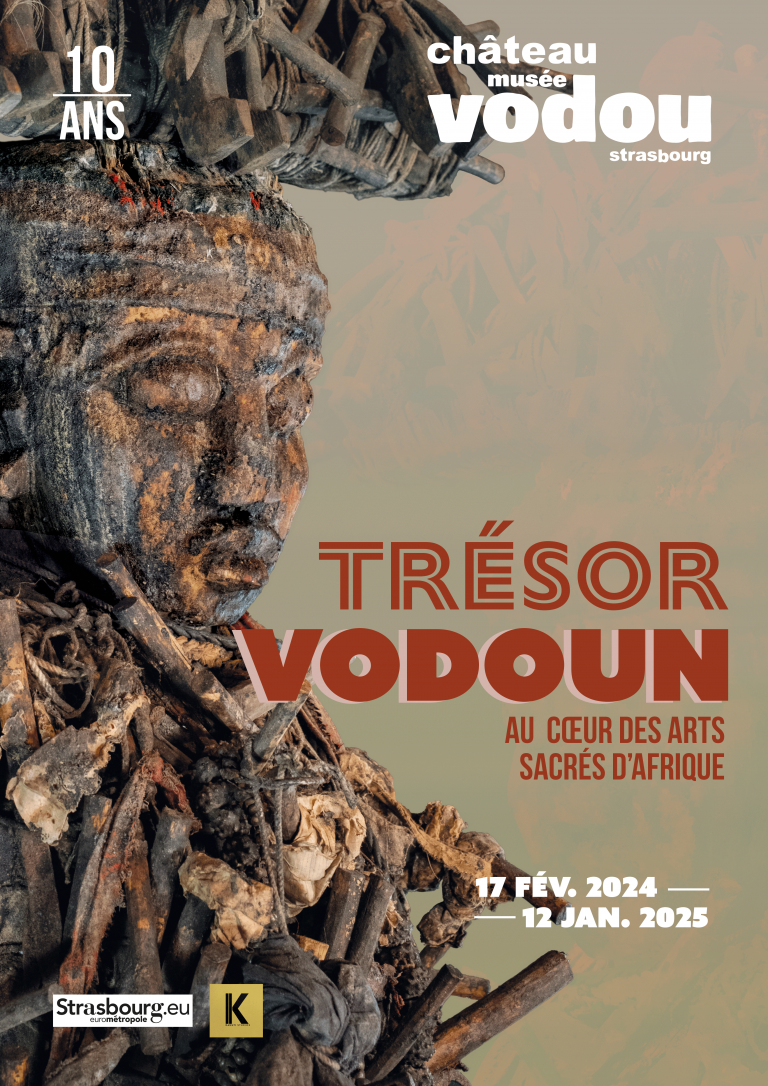

THE TEAM
Commissaires : Ana Carolina Gonzalez Palacios, Adeline Beck et Marc Arbogast.
Présidence : Dominique Baudendistel.
Recherches scientifiques et rédaction : Jean-Yves Anézo, Katia-Myriam Borth-Arnold.
Scénographie et Graphisme : Ana Carolina Gonzalez Palacios.
Traductions : Katia-Myriam Borth-Arnold, Michaël Mailfert.
Photographies des objets de la collection : Pascal Beck
Photographies présentées dans l’exposition Marc Arbogast, Adeline Beck.
Équipe technique : Sébastien Furderer, Clément Levieux, Noé Meyer, Quentin, Pascal et Evelyne Beck, Alice Wach.
Collector’s editorial
At the start of our African travels, my wife Marie-Luce and I were frenetic collectors, but we quickly became passionate about Vodou objects and specialised in them. Finally, we ended up abandoning everything else.
Usually, when you buy a work of art in a gallery, you are attracted by a piece that you find subjectively ‘beautiful’. The approach is quite different, however, when it comes to adding a Vodou piece to a collection.
While the first approach may be aesthetic, very quickly the function, the sacred charge of the object, comes to prevail. All the objects in the collection are, without exception, objects of worship.
Why have we chosen the word ‘treasure’ for this new exhibition? There is certainly no question here of estimating the financial value of objects that would have a high monetary value. Our treasures, the objects we have chosen to exhibit, are, in our view, the most elaborate pieces, the best sculpted or worked by their creator, but also those that have a great sacrificial and magical charge.
In days long gone by, designers of Vodou objects used to spend more time on the finishing touches and details (faces, hairstyles, fabrics). Nowadays, representations are more generally focused on pure symbolism, and botchio may, for example, be replaced by simple poles with very little carving. We’ve therefore selected our ‘treasures’ mainly among the old objects of the collection. Here, sacred power borders on aesthetic magic.
Through the exhibition of these objects, Marie Luce and I hoped to shed some light on Vodou culture. Far from being just a religion, it defines the way a society functions.
The work of the museum team contributes to this objective through exhibitions, conferences, podcasts, publications, and books, not forgetting the mission of conservation.
An international Vodou museum is due to open soon in Porto Novo. May this new institution encourage you to visit Vodou countries, particularly Benin and Togo.
Marc Arbogast
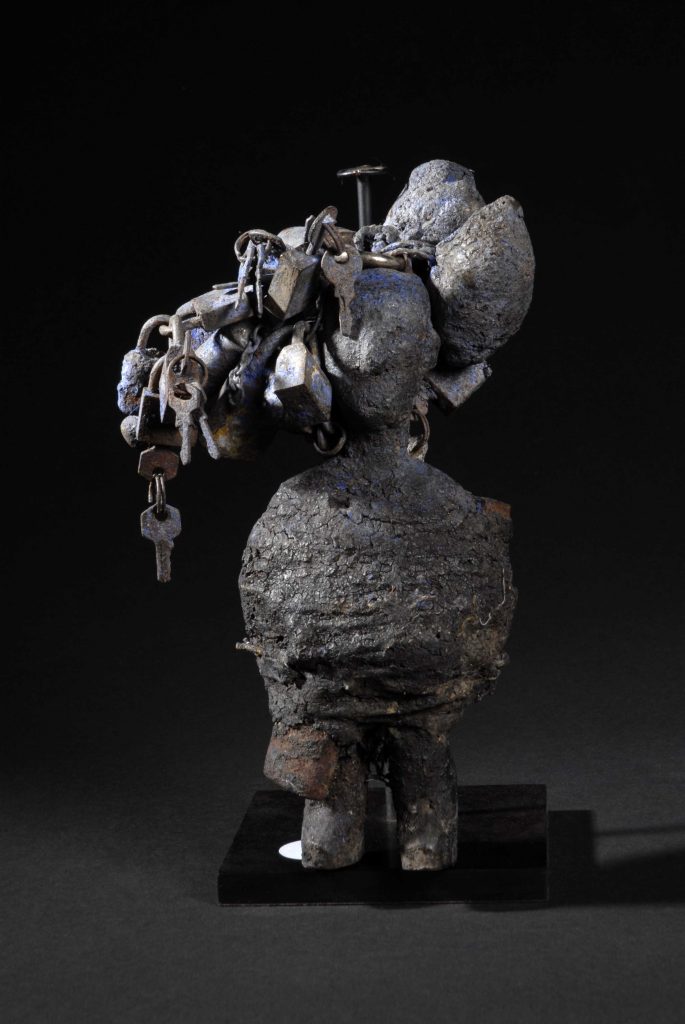

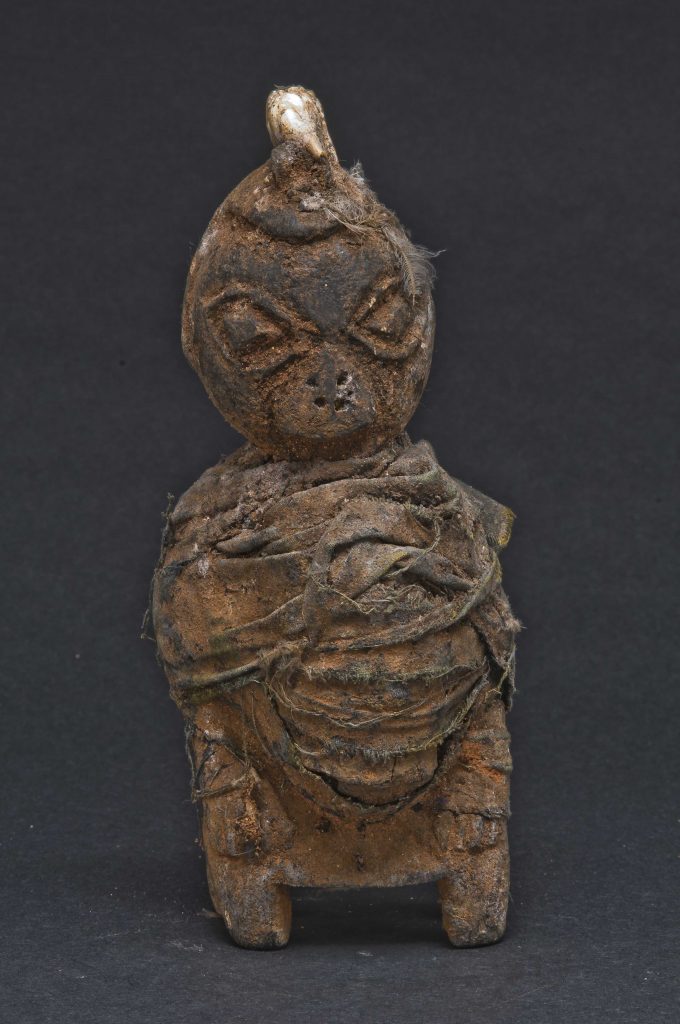



2024 : 10th anniversary of the museum
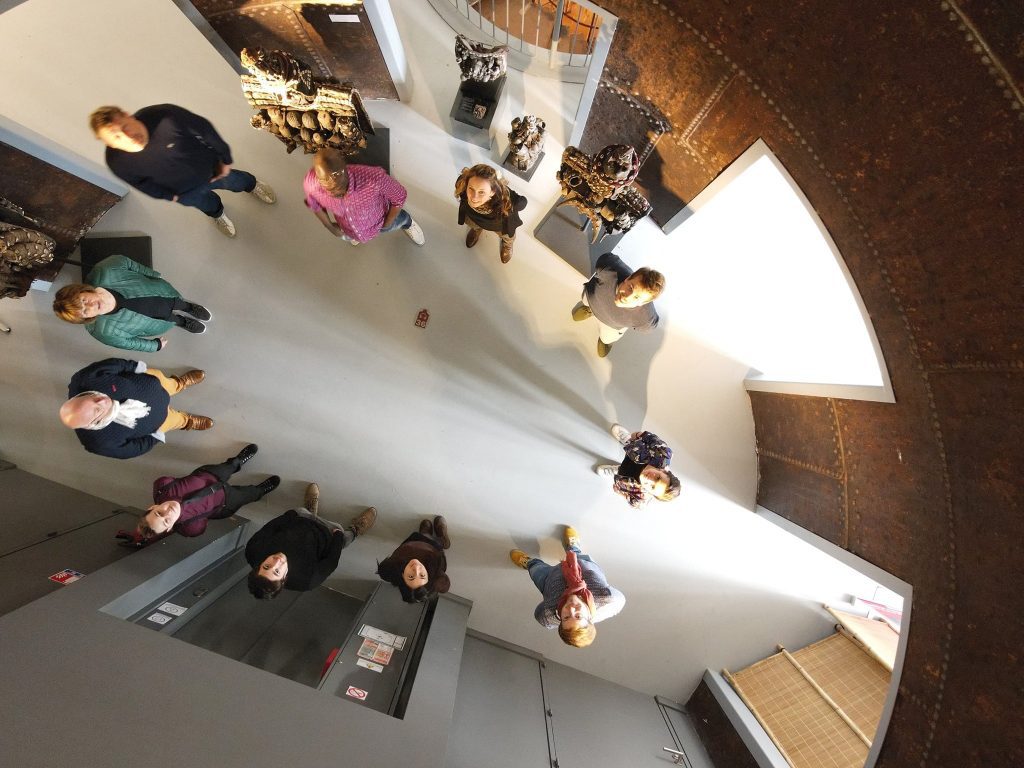

BALANCING ON BORDERS, PASSING ON HUMANITY
For 10 years, we’ve been camping on borders and crossroads, with a sensation of tightrope walking…
Each step, if not measured, or if it leans a bit too much on one side or the other, can jeopardise the crossing towards success.
Yet the challenges are many, because at Château Vodou, we are ‘carriers’:
Carriers of ideas, memories, and humanity.
Carriers of objects, knowledge, art, and the sacred.
Builders of bridges, creators of exchanges and blends.
For 10 years, we have been at a crossroads: between the visible and invisible worlds, Western Europe and West Africa, the intimate and the collective, belief and science, culture and tourism, the playful and the learned, the experimental and the theoretical, the private museum and the public interest, passion and budgetary reality, conservation and transmission, the rational and the magical.
Each of these crossroads has required choices to be made and more or less easy compromises to be reached. It’s not an easy thing to talk to strangers (our visitors) about religion and inner life. All the more so when these beliefs come from another continent.
We have done our best to ensure that these positions remain in line with our values, which have themselves grown and evolved over the years.
Of course, there have been moments of doubt, when the team has felt like letting go of the thread in the face of so many obstacles (financial, legal, political, controversial, etc.).
One has to admit that it’s complicated to learn about Vodou from books, and it’s difficult to set up and ensure the survival of a museum that doesn’t have the backing of the ‘Musée de France’ label, even though it produces high-quality scientific work. It’s also hard not to laugh when you’re asked, for the umpteenth time, if you, as director, are a priestess or if the museum isn’t a cult. And it’s even harder not to lose temper when the colour of one’s skin (whatever that may be) gives rise to unacceptable behaviour.
But, as I sincerely believe today, the reason we have held on without stumbling is because we have been able to measure our steps, at the crossroads of borders, like extreme acrobats.
We will continue to offer a sense of wonder, to open doors to other cultures, to be pillars of discovery, to provide a unique experience for every visitor. Whether in a playful, sensitive, expressive or scientific way, visitors at the Château Vodou are invited to take a journey through a collection of ritual objects steeped in tradition, meaning and surprise. The aim is to whet curiosity, broaden horizons and promote interculturality, with the history of continents, arts, religions, and pharmacopoeia as a common thread.
We keep the collection alive and carry out scientific research on a wide range of themes, despite the difficulty of carrying out studies on this oral and secret culture. We offer new approaches and new activities to encourage everyone to come and visit the museum, in a spirit of respect and kindness.
What’s more, in a harsh and oppressive geopolitical context, and despite the uncertainties of the future, we feel it’s necessary to remain a creative force in order to offer escapism, perspective and intimate experiences between audiences and works of art. Doesn’t silence about art and culture give rise to obscurantism? Isn’t it essential to keep the debate going, whatever the cost?
Our activities have given rise to some wonderful encounters and exciting new projects. There have been so many proposals in just a few half-years: conferences, concerts, podcasts, virtual reality, dance classes, murder parties, yoga classes, wine-tasting tours, nocturnes, treasure hunts, album launches, photo shoots, children’s albums, seminars, aperitifs, shows, storytelling… And I’m sure I’m forgetting some.
The precious tightrope walkers that have made this journey possible are all the people who have come into contact, from near or far, with the museum over the last 10 years: Marc and Marie-Luce Arbogast, the members of the team past and present, the board of directors, the partners, each more extraordinary than the last, and our loyal supporters.
Today, the greatest reward is knowing that our expertise is now recognised nationally and internationally by our peers and visitors.
Thank you to all of you, from the earthly world and the invisible world, who have taken part in this adventure, which promises many more twists and turns.
We hope that we will not falter in the future, and that the richness of Vodou, its aesthetics, its knowledge and its fundamentals will continue to carry us forward.
Adeline Beck, Administrator
